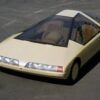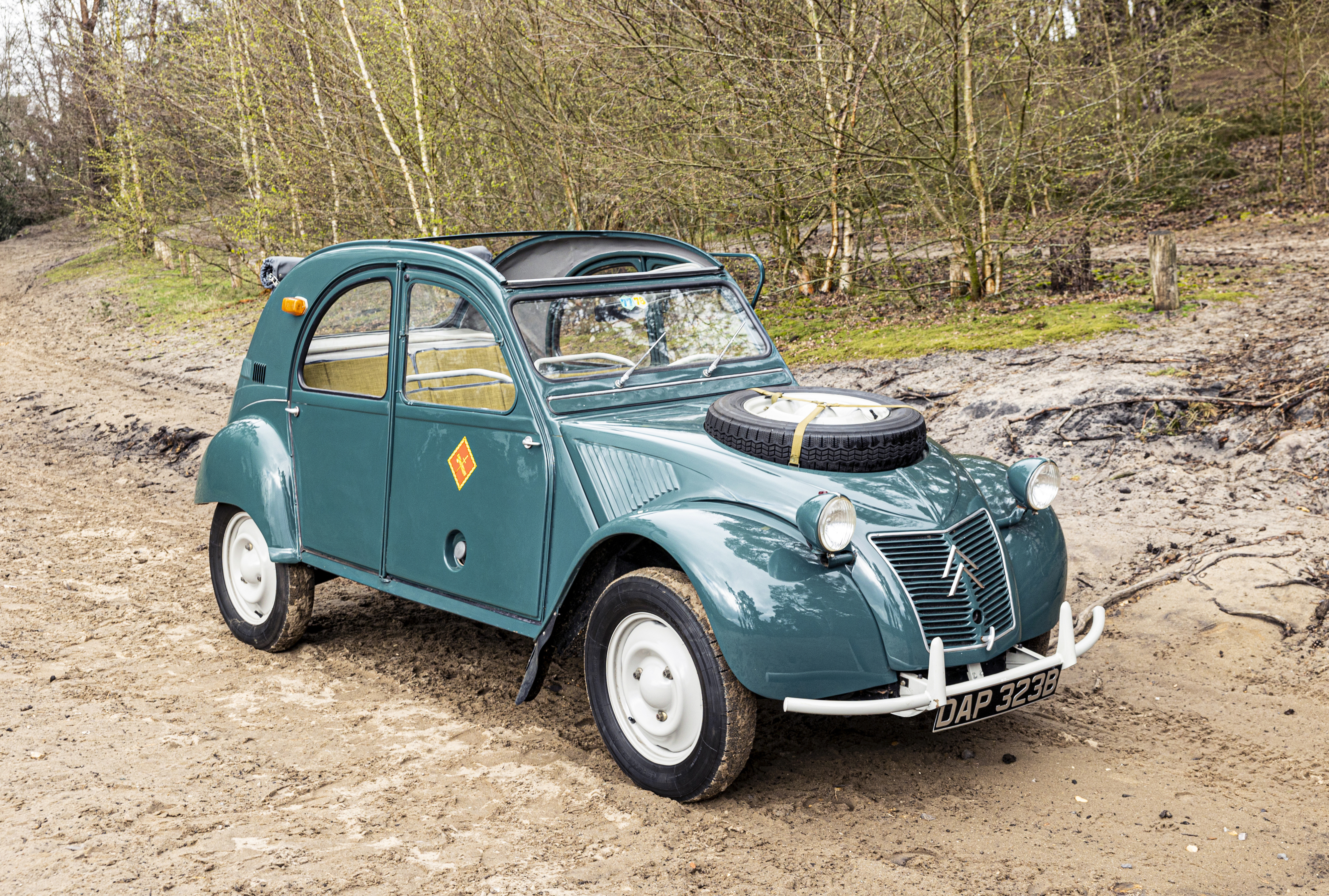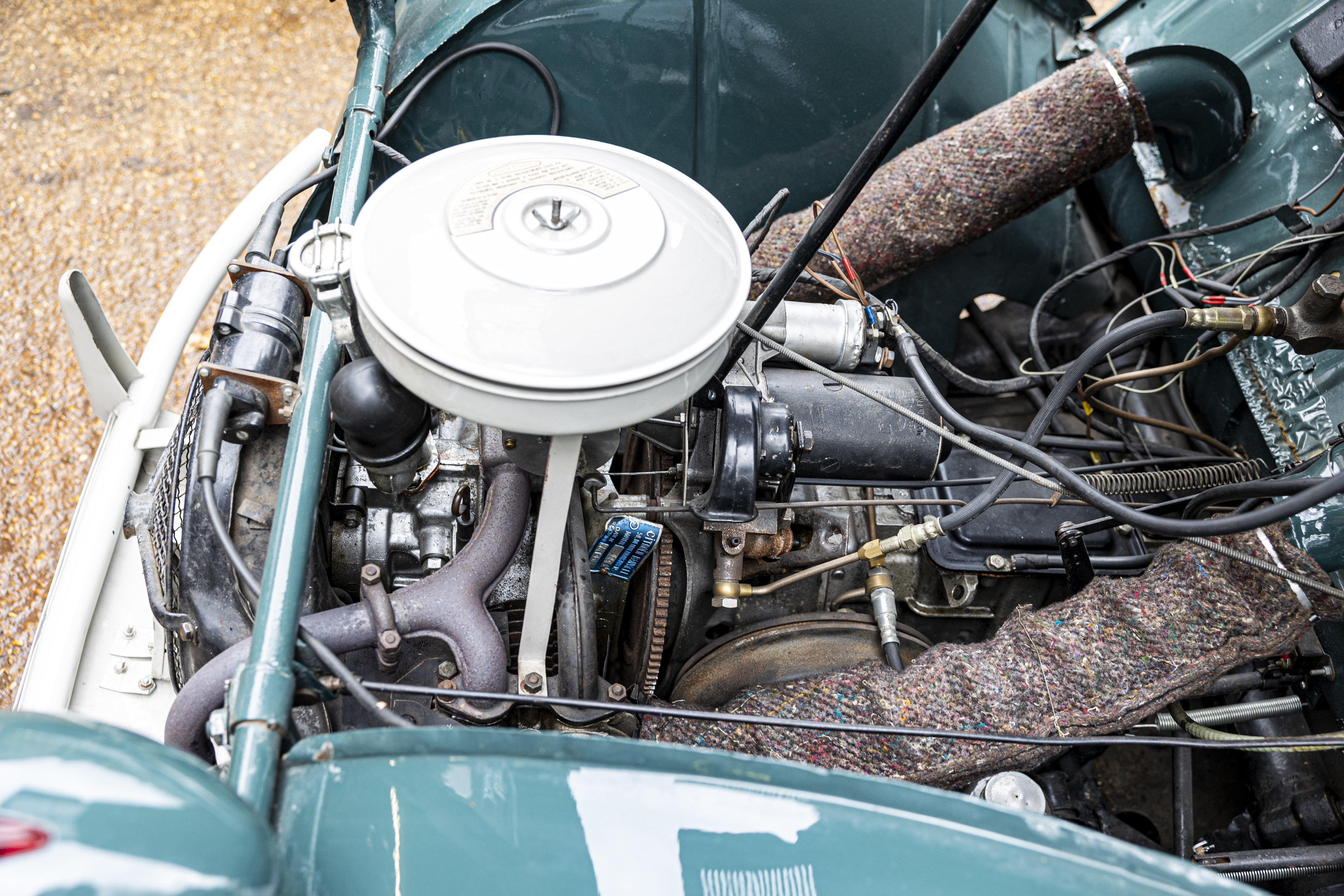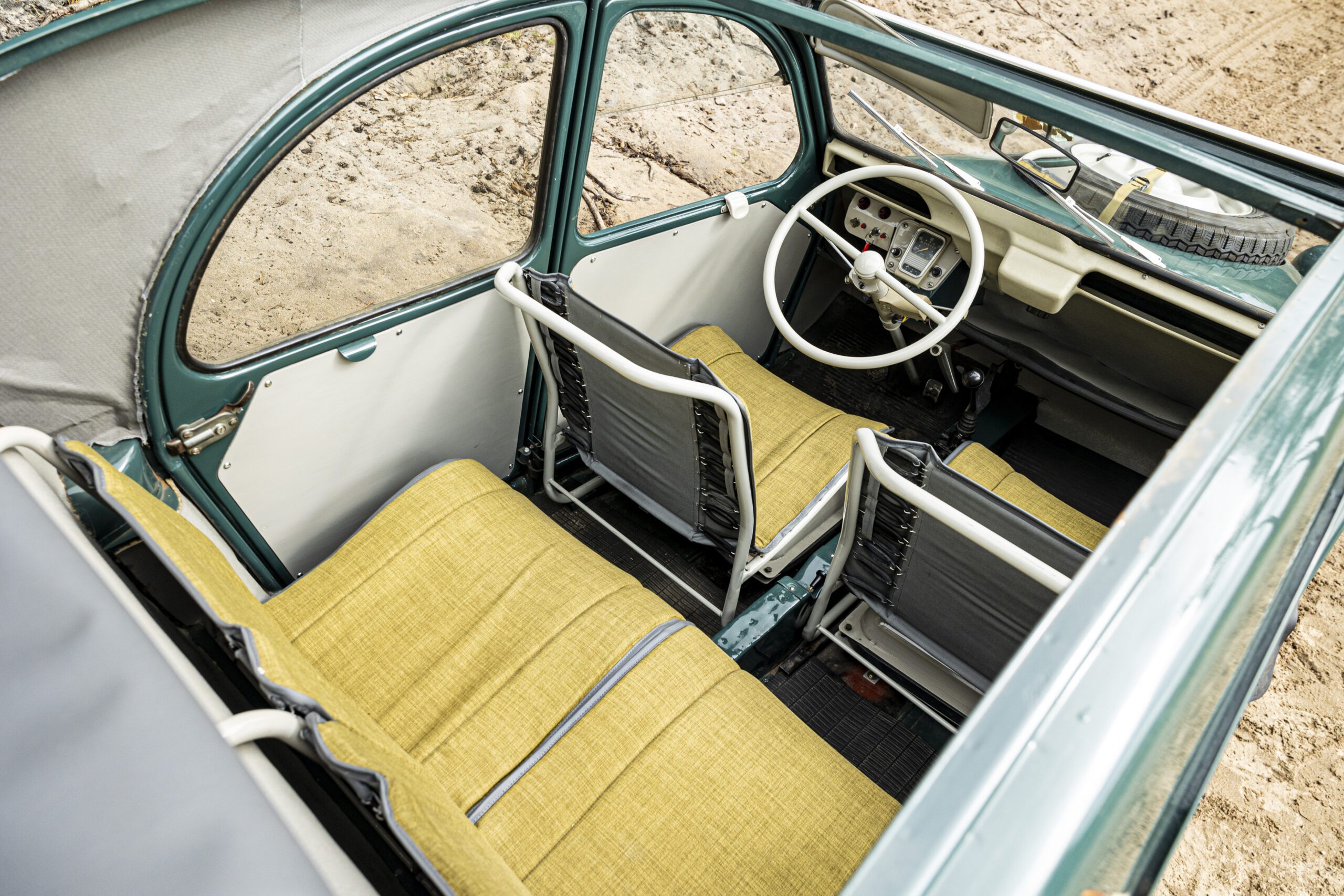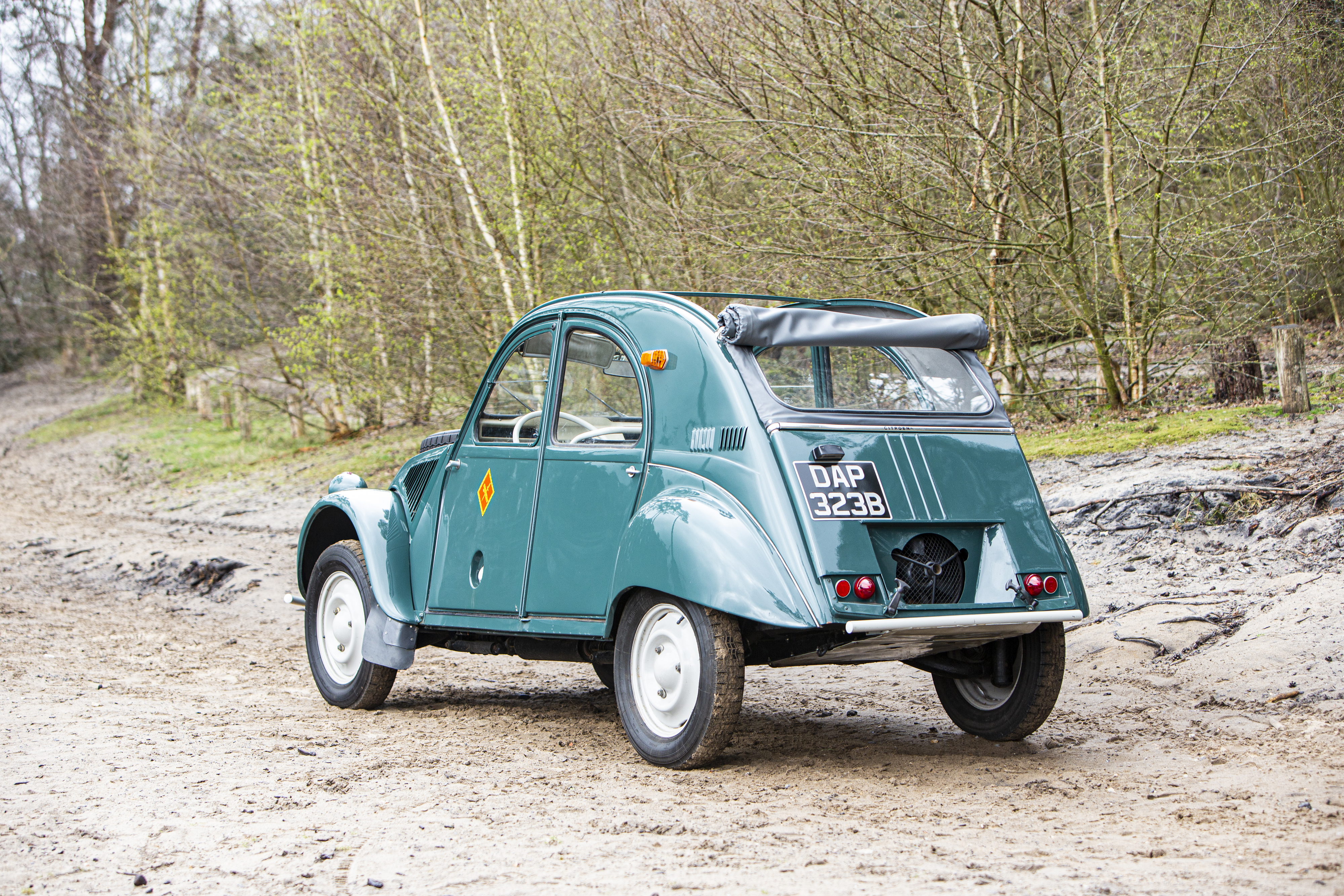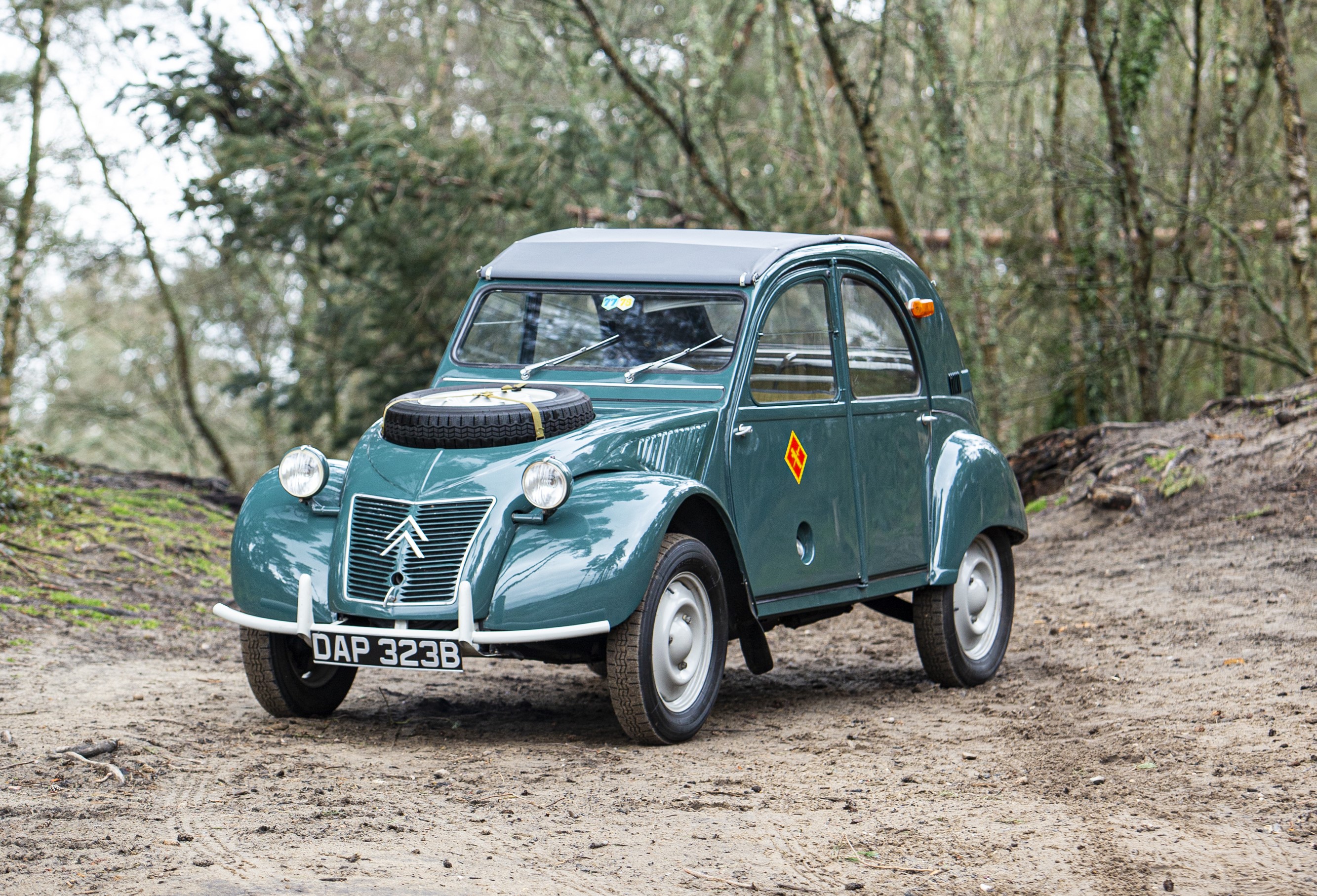The Citroën 2CV’s straightforward design is refreshingly uncomplicated. Created in 1948 by the French carmaker as an affordable way to mobilize rural communities that still relied on horse and cart, the 2CV’s name translates to “two horsepower” from French. To accommodate the conditions of French roads immediately following the war, the 2CV was built to be cheap, dependable, simple to maintain, and had a long-travel suspension that allowed it to traverse freshly ploughed fields, famously demonstrated in period advertising campaigns with a basket of eggs on the passenger seat.
Despite its humble origins, the 2CV surpassed expectations and remained in production for 40 years until the last French-built example rolled off the assembly line in 1988. During its run, the 2CV remained true to its post-war mandate, with only occasional increases in power and engine size, except for the intriguing 4×4 “Sahara” variant. Citroën engineers modified the standard 2CV for off-road driving, adding an additional engine in the rear of the car that drove the rear axle, providing the “Tin Snail” with four-wheel drive capabilities. Although the factory unveiled its prototype in 1958, production began two years later, led by Citroën dealers who are said to have converted their own vehicles in a similar manner. The official version was created for use in remote French colonies, such as those located in North Africa.
Source: RM Sotheby’s



